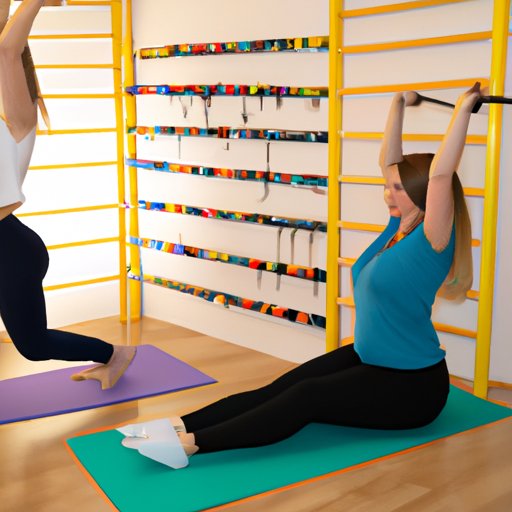
Introduction
Good posture is essential to maintaining a healthy body, but many of us struggle to maintain good posture in our day-to-day lives. Poor posture can lead to pain, discomfort, decreased mobility, and other health issues. The good news is that there are plenty of ways to improve your posture. In this article, we’ll explore various strategies you can use to improve your posture, from making simple changes to your daily habits to incorporating exercises that can strengthen your core.
Start with the basics
Good posture is all about alignment. When your body is aligned correctly, you can move more easily and fluidly. Good posture has numerous health benefits, including improved breathing and circulation, less stress on your muscles and joints, and more energy throughout the day. To improve your posture, start by identifying your poor posture habits. These can include slouching, hunching your shoulders, and carrying too much weight on one side of your body. Once you identify these habits, work on correcting them. Practice standing and sitting up straight, with your shoulders relaxed and your weight evenly distributed on both feet. When you walk, lead with your chest and keep your head up.
Get moving
Exercise is crucial for posture improvement. By strengthening your core muscles, you can improve your overall posture and prevent back pain. Try incorporating exercises like planks, squats, and lunges into your workout routine. Stretching is also essential for posture improvement. Take a few minutes every day to stretch out your back, neck, and shoulders. If you sit for long periods, try getting up and moving around every 30 minutes to keep your body active throughout the day.
Pay attention to your workspace
If you work at a desk, you’re probably familiar with the posture problems that come with it. Sitting for long periods can take a toll on your body, leading to lower back pain, neck pain, and shoulder pain. To combat these problems, make sure your workspace is ergonomic. Adjust your chair so that your feet are flat on the ground and your thighs are parallel to the floor. Keep your computer screen at eye level, and use a cushion to support your lower back if needed. Take frequent breaks to stretch and move around, and consider investing in a standing desk so that you can alternate between sitting and standing throughout the day.
Mind your habits
Many of our daily habits can contribute to poor posture. For example, texting or reading on your phone can cause you to hunch over, straining your neck and shoulders. To improve your posture, try holding your phone at eye level or taking regular breaks from your phone. When carrying heavy bags or backpacks, distribute the weight evenly on both sides of your body. And when you’re standing in line or waiting for a friend, try to avoid leaning on one leg or hip. These small changes can make a big difference in your posture over time.
Seek professional guidance
If you’re experiencing pain or discomfort related to your posture, it’s essential to seek medical help. A physical therapist or chiropractor can evaluate your posture and provide personalized recommendations for improvement. When looking for a care provider, make sure to choose someone who is licensed and experienced in treating posture-related issues. In addition to seeking professional help, empower yourself to take control of your own health by staying active, maintaining good posture habits, and making regular adjustments to your workspace and habits.
Conclusion
Improving your posture takes time and effort, but it’s well worth it for the numerous health benefits it provides. By making simple changes to your daily habits, incorporating exercise and stretching into your routine, minding your workspace, and seeking professional guidance when needed, you can achieve better posture and improve your overall health. Remember to be mindful of your posture throughout the day and make it a priority in your life.




